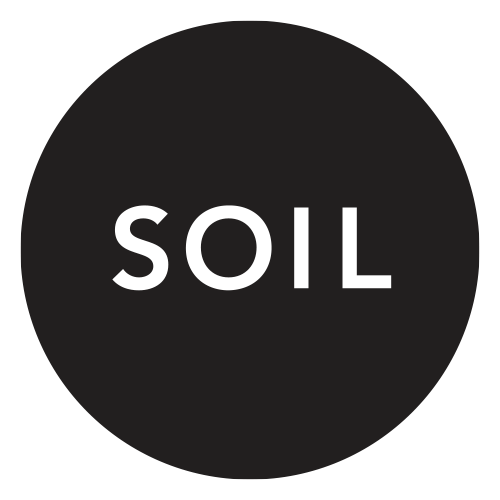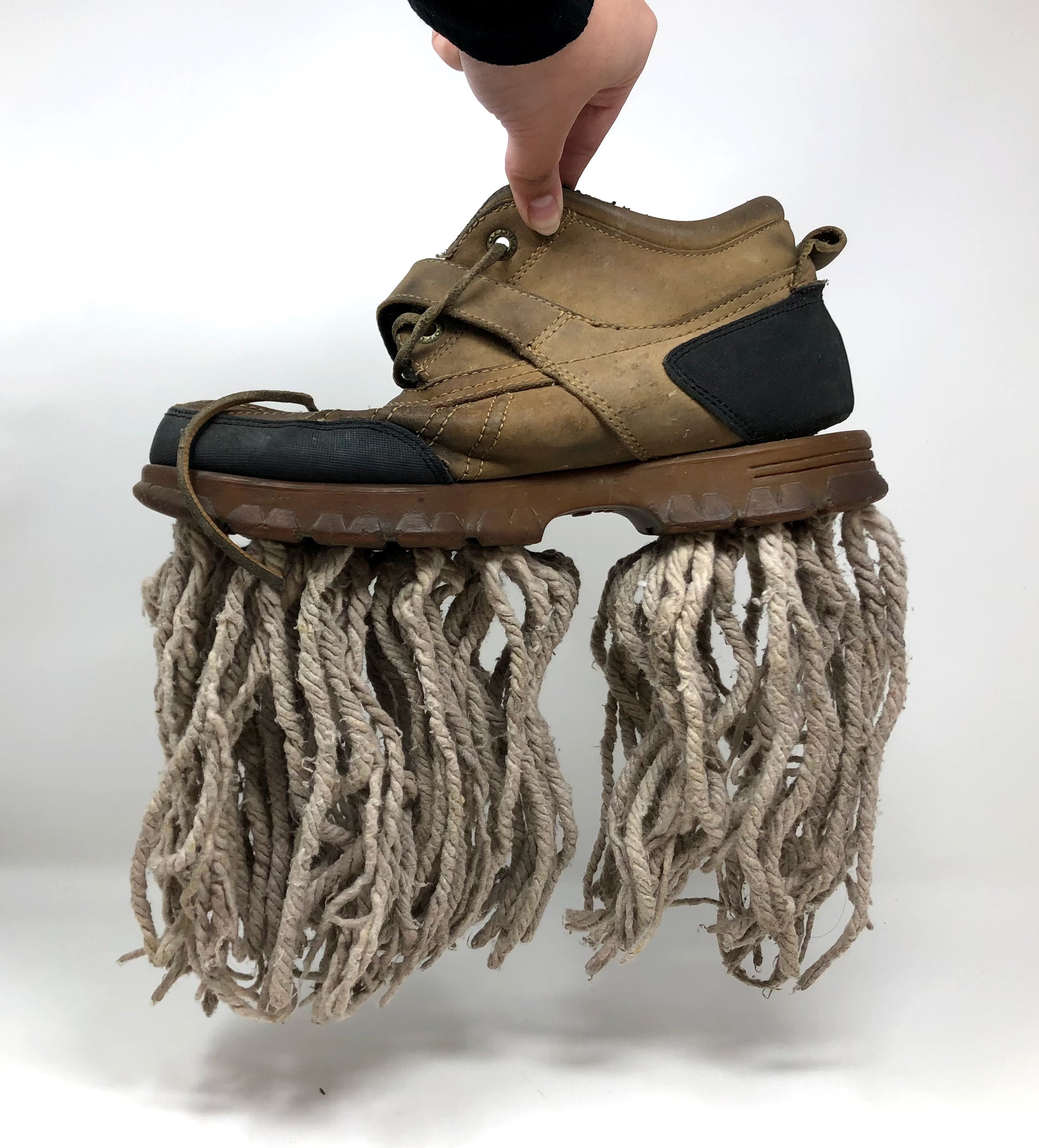December 2023 - HANDS LOOM PENCIL SHOVEL
HANDS LOOM PENCIL SHOVEL
December 07, 2023 - January 13, 2024
Opening Reception / Thursday, December 07, 5–8pm
Winter Gallery Hours:
Friday–Sunday, 11am–4pm
Sofya Belinskaya
Lee Davignon
Quinton Merada
Tara Tamaribuchi
SOIL presents works of its newest members: Sofya Belinskaya, Lee Davignon, Quinton Merada, and Tara Tamaribuchi. From their critical perspectives, these artists probe reality to bring light to what is unseen and forgotten, particularly in issues of social, economic, and environmental justice. Through Hands, Loom, Pencil, and Shovel, they share modes of rereading and layering materials and images, whether they be found, archival, and of the everyday. Through these works in assemblage, weaving, and drawing, the artists aim to develop discourse and connection.
ARTIST STATEMENTS & BIOS //
Sofya Belinskaya is a Ukrainian-American painter and draftswoman, born in Donetsk, Ukraine and based in Seattle, WA. She holds a BFA from the School of the Museum of Fine Arts, Tufts University. Past exhibitions include Linda Hodges Gallery, Gray Sky Gallery, and Axis Gallery. She has received awards and grants from 4Culture, Artists for Artists Prize in Drawing, and CityArts. She was a founding member of Lion’s Main Collective, multi-disciplinary queer and trans art collective, working on collaborative projects including SAM’s Art in the Park Program, and Henry’s Art Gallery Open House. She is a teaching artist, working with institutions including Pratt Fine Arts Center, Meta Open Arts, and Amazon.
Belinskaya explores the fragmented nature of memory and relationship to place in her works. A resident of the Pacific Northwest for the past decade, works in the Ripple (Root) series pay homage to the landscape and history of this region. The architecture in these drawings are inspired by a shipbuilding yard constructed in the late 1880s in the SODO district. Exposed and weathered wood beams highlight PNW’s logging history, while other drawings explore the forms of uprooted trees emblematic of the region’s old growth forests. Methodical and tender, these drawings are made slowly, creating an intimate bond between artist and subject.
Lee Davignon is a textile and installation artist live/working in the Cascade foothills of Washington. Born and raised in Rhode Island, they earned their BFA in Fibers from the Massachusetts College of Art and Design in 2013. Davignon’s sculpture and textiles form out of a material-led investigation that exists at the intersection of waste stream materials an extensive library of craft skills. Their work has been shown at the Vestibule Gallery, SOIL, Shunpike Storefronts, Fuller Craft Museum, Spring Break NYC, and the Klondike National Historical Park.
Through a combination of traditional textile techniques, sculptural experiments, and material play, Lee Davignon’s work explores themes of waste, value, and craft. Fascinated by the material minutia of the everyday objects and materials we encounter in our environments, Davignon’s process-led practice clusters, layers, and transforms reclaimed material. Conversing between weaving and sculpture, Davignon’s work seeks connection, provokes curiosity, and encourages discourse on our roles as consumers within systems of commodification and waste.
Quinton Merada (b. 1994) currently resides in Tacoma, WA but was born and raised in St. Petersburg, FL. Merada graduated from the University of Florida with a BFA in sculpture. His works have been exhibited at a number of institutions and galleries with his latest solo exhibition at the Morean Art Center in St. Petersburg, FL. His latest group shows included works at the PUNCH Projects in Throp, WA and several works at the Port Angeles Fine Arts Center in Port Angeles, WA.
A captivation with the underbelly of society lies at the core of conceptual sculptor Quinton Merada’s practice. Raised by a working class family, Merada developed a fascination with the disregarded from an early age. As a child, he remembers his father relying on labor unions to protect his rights and validate his worth as a worker. Unfortunately, in the United States, the working class has been repeatedly perpetrated with economic and social injustice. Although the new working class upholds this country’s integrity, it is consistently rendered invisible on social, economic, and political spectrums.
Utilizing found objects, Merada displays an interest in the inherent histories and metaphorical significance of discarded objects and forgotten spaces. His practice re-contextualizes these objects in an effort to elevate and foreground overlooked classes while conducting critiques on the privileges of wealthy elites. Merada chooses to underscore the intersection of labor and leisure with dark humor, irony, and absurdist perspectives to examine the class structures that dictate modern society. As his work stirs thought and opens dialogues, he hopes to provoke thoughtful exchanges amongst socio-economic spheres.
Tara Tamaribuchi (b. 1975, California) investigates human life experience in an organic, unfolding art practice. She enters artmaking from a Buddhist and diasporic perspective, with interests in impermanence and connecting the past and present to new futures. Tamaribuchi earned a BA in Journalism from George Washington University, a BFA in Painting from Pacific Northwest College of Art, and a MFA from Lesley Art and Design. In the last two years, the artist has participated in exhibitions at Galpão in São Paulo, Brazil, Eastover Contemporary Art Center in Lenox, MA, Mass MoCA in North Adams, MA, Arts Mid-Hudson, Poughkeepsie, NY, and in Seattle at Seattle University Hedreen Gallery, Northwest African American Museum, and Method Gallery. She curated the web-exhibition “Reimagining the Future from the Past” for the Washington State Arts Commission and is a juror for the Seattle Asian American Film Festival. She is a leader in the effort to save more than 100 Seattle art studios from redevelopment at the Inscape Arts Building, the former INS immigration and detention center in the Seattle Chinatown International District. As an artist, she has been building support from city, county, state and federal leaders, and leading creative placemaking efforts by collaborating with cultural institutions including the Wing Luke Museum and On the Boards. Tamaribuchi currently lives and works in Seattle, WA.
The Camouflage Net Project began as a response to Dorothea Lange’s documentation of incarcerated Japanese Americans weaving thousands of camouflage nets for the US Army as prison labor. That archival impulse intersects with seeing history repeat itself again with the recent mass incarceration of migrant children and families. When I first gazed upon the images of my community elders as young adults, weaving strips of hemp into enormous nets, this overturned my understanding of “camp labor” from jobs such as farming, cooking, and teaching, to the possibility of tangible production of objects.
For fourth-generation Japanese Americans, we have inherited the specter of the unknown. Our parents and grandparents filtered those years with a positive spin or told us nothing at all, protecting us from the truth. When my grandmother finally opened up to me about her experience, I felt the depth of her trauma -- a trauma that needed to be bottled up again. I connect to my elders through the labor of weaving the materiality of kimono fabric, healing this trauma and sending pride of being Japanese back in time to them. As the military technology of camouflage protects people and objects through visual blending, I reread this application as an anti-xenophobia filter through which we see all people as interconnected and interdependent with each other and the universe.
Quinton Merada, Work Smarter Not Harder
Boot and Mop Head
6 x 13 x7
2023
Lee Davignon, Salmon Run
Handwoven cotten, polyester, found fabric, wood
2019
Sofya Belinskaya, Ripple (Root III)
graphite on paper
18.25 x 13.75
2022
Tara Tamaribuchi
Hedreen Gallery, Seattle




